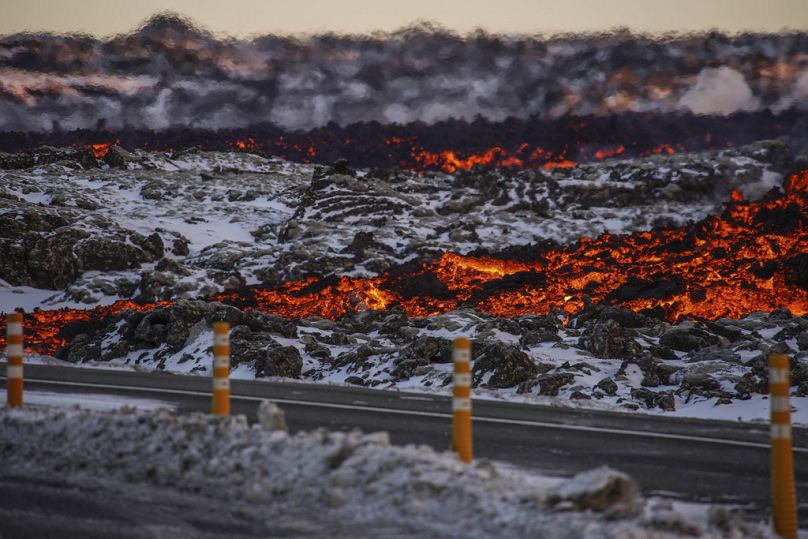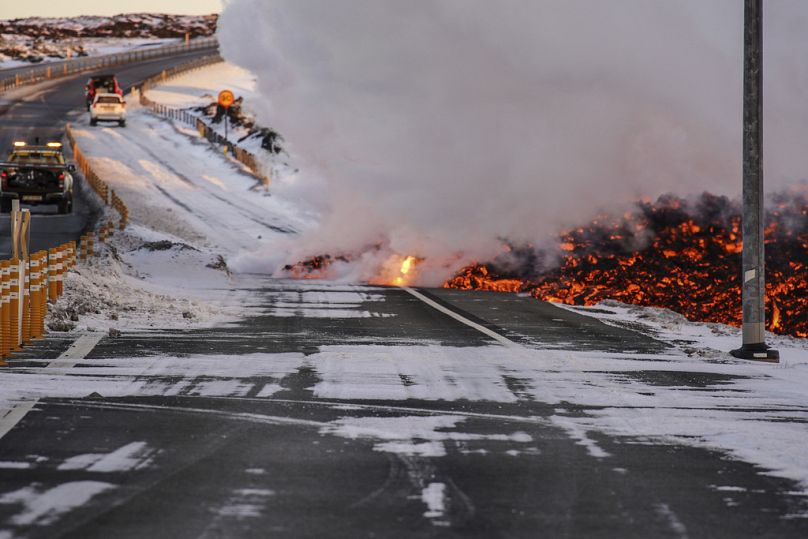The nearby Blue Lagoon thermal spa was closed when the eruption began and all guests were safely evacuated.
A volcano in southwestern Iceland erupted for the third time since December on Thursday, sending lava jets into the sky and prompting the evacuation of the Blue Lagoon spa, one of the island nation's biggest tourist attractions.
The eruption began at around 0600 GMT along a 3-kilometre fissure northeast of Mount Sundhnukur, Iceland's meteorological office said.
The event is unfolding about 4 kilometres northeast of Grindavik, a coastal town of 3,800 people that was evacuated ahead of a previous eruption on 18 December.
The Icelandic Meteorological Office said the lava was flowing westwards and there was no immediate threat to Grindavik or a large power station in the area. Civil defence officials said no one was believed to be in the town at the time of the eruption, Icelandic national broadcaster RUV reported.
"They shouldn't have been, and we don't know of any," Víðir Reynisson, the head of Iceland's civil defence, told national broadcaster RUV.
The nearby Blue Lagoon thermal spa was closed when the eruption began and all guests were safely evacuated, RUV said.
The Icelandic Met Office said it had warned of a possible eruption earlier this week after monitoring a build-up of magma underground over the past three weeks. The amount of magma that had accumulated was similar to the amount released during an eruption in January.
Hundreds of small earthquakes have been recorded in the area since last Friday, capped by a burst of intense seismic activity about half an hour before the latest eruption began.
Dramatic video from Iceland's coastguard shows fountains of lava shooting more than 50 metres into the darkened sky. A plume of steam rises about three kilometres above the volcano.
This is the third eruption since December from a volcanic system on the Reykjanes peninsula, where Keflavik, Iceland's main airport, is located. No disruption was reported at the airport on Thursday.
Iceland, which sits on top of a volcanic hot spot in the North Atlantic, experiences an eruption every four to five years on average. The most disruptive in recent times was the 2010 eruption of the Eyjafjallajökull volcano, which spewed huge clouds of ash into the atmosphere and led to widespread airspace closures over Europe.
Grindavik, about 50 kilometres southwest of Iceland's capital Reykjavik, was evacuated in November when the Svartsengi volcanic system awakened after nearly 800 years with a series of earthquakes that opened large fissures in the earth between the town and Sylingarfell, a small mountain to the north.
The volcano finally erupted on 18 December, sending lava flowing out of Grindavik. A second eruption, which began on 14 January, sent lava towards the town.
Defensive walls that had been reinforced since the first eruption stopped some of the semi-molten flow, but several buildings were destroyed.













